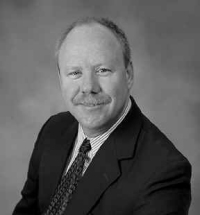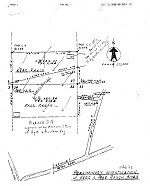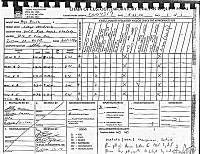|
From
the November, 2002 Edition of The Oracle
Almost
history: News from the recent past
Pinal
supervisors seek removal of UA Dump
Risk
to aquifer near Oracle landfill cited
By J.C. Huntington
Posted to PoisonedWells
Jan. 10, 2002
Fifteen years ago, on May 21, 1987, the headlines
that drew you to this piece also captured the attention of Tucson Citizen
readers
William Mathieson, then chairman of the Pinal
board of supervisors, had informed the Citizen that the supervisors were
requesting that all hazardous materials in the Page-Trowbridge radioactive/toxic
waste dump be dug up and moved elsewhere.
The dump, located a few miles from Oracle Junction,
lies over the water supply for residents of Oracle, SaddleBrooke and Catalina.
On Nov. 1, 2000, some 13 years after the Citizen
article appeared, a different board of supervisors convened a hearing to
consider a request to rezone 2,500 acres.
The rezoning had been requested by Robson Communities.
If approved, the rezoning would enable construction
of more than 6,000 houses for Robson’s SaddleBrooke Ranch project next
to the Page-Trowbridge dump.
A change in alignment
In 1987, Mathieson explained to the Citizen why
the board of supervisors wanted the dump exhumed.
“We’ve been aligned with the people, and they
want the dump removed.” Mathieson said.
At the 2000 hearing, Steve Soriano, executive
vice president of Robson Inc., told the supervisors that the $5.5
million Robson Communities had arranged to donate to the county would instead
be used to fight any referendum that might allow voters to decide if the
rezoning was in their best interest.
Robson’s plan
At the 2000 hearing, Jim Polous, general manager
of Robson utilities, outlined Robson’s plan to protect the groundwater
from the threat of toxins cooking in the Page-Trowbridge dump.
Polous said that Robson Communities would install
a set of irrigation wells between the dumpsite and the drinking-water wells.
According to the minutes of the hearing, Polous
told the supervisors the proposed the irrigation wells would “create a
capture zone so that if there were contaminants leaking from the landfill
they would be captured by the irrigation wells.” The capture zone would
stop the contaminants before they hit the drinking-water wells for SaddleBrooke
Ranch and Oracle, Polous said.
After hearing all public input, supervisors Lionel
D. Ruiz, Sandy Smith and Jimmie B. Kerr unanimously approved Robson’s rezoning
request.
Too costly
In 1987, Mathieson told the Citizen that, “(UA)
President (Henry) Koffler promised to remove some of” the hazardous material.
Mathieson was referring to a Feb.19, 1985, letter
from Koffler in which he said the “materials landfilled during 1985 will
be removed and treated to the extent possible in due course.”
No materials have been removed from the dump.
The Citizen article reported that UA officials
said the high cost of moving the waste was a factor in Koffler’s change
of plans.
The Citizen article noted that the task of removing
the hazardous material would be a large undertaking because the two side-by-side
dump areas are each larger than a football field.
The article reported that UA officials said the
dump contained hundreds of tons of chemical wastes including heavy metals,
pesticides, acids, caustics, organic solvents, flammable materials and
photographic chemicals.
 |
| Steve Holland, UA risk management director |
The article also reported that UA officials
said the radioactive wastes in the dump included urine from patients treated
with radioactivity and the carcasses of animals injected with radioactive
materials during experiments.
Steve Holland, then a safety officer with the
UA’s risk-management team, told the Citizen that all of this hazardous
material “would have to be re-opened and analyzed” before any other landfill
would accept it.
Holland has since been promoted to director of
the UA’s risk-management department and is responsible for managing the
Page-Trowbridge dump.
A cost-reduced cap
The Citizen story described the 1987 plan for a
cap over the dump that would protect folks from drinking water contaminated
by the toxins buried there.
Compacted clay interlaced with plastic sheeting
was to cover the dump and would keep rain from carrying the poisons to
groundwater.
The final cap, installed in 1997, is not made
of compacted clay and has no plastic sheeting.
The plastic sheets were omitted from the cap because
of cost considerations.
Cost considerations also resulted in replacing
the compacted-clay cap with an earthen cap consisting of three parts of
sandy-dirt mixed with one part substandard clay.
Too dangerous
UA and state officials told the Citizen that, in
addition to the cost, the dump shouldn’t be exhumed because of the danger
involved.
Cherry Moyer, then a environmental engineer with
the hazardous-waste unit of the state health department, told the Citizen
that moving the wastes would be too dangerous, especially for the workers
involved.
Holland told the Citizen the hazards of moving
the waste “would far outweigh any risk of leaving it there.”
Jan Stewart, then a spokesperson for the Arizona
Radiation Regulation Agency, told the Citizen the agency would not recommend
removing the wastes because it could result in exposure to the workers.
“It’s not safe, not practical and not feasible,”
to move it, Martha Anderson, then director of the UA risk-management office,
told the Citizen in 1987.
Mathieson didn’t agree.
If the toxic wastes were safe enough to haul to
the site, why is it too dangerous to take them away, Mathieson asked.
UA’s clay barrier myth
Robert E. Dorsey was the head of the UA’s risk-management
and safety department and supervised the Page Ranch dump from 1973 to 1985.
Dorsey told the Citizen that a clay barrier protected the aquifer from
the hazardous materials in the dump.
“A very, very deep . . . substantial clay barrier
below the site” makes it extremely unlikely toxins could ever get to groundwater,
Doresy claimed.
On Sept. 29, 1999, the Arizona Wildcat quoted
Herb Wagner, associate director of UA’s risk-management department:
“Between the surface of the soil and groundwater
there is 500 feet of clay that acts as a natural barrier,” Wagner
said.
The showdown
There is no clay barrier between the dump and the
aquifer.
The Page-Trowbridge dump has four active monitoring wells. The wells
are used to test groundwater from beneath the dump.
Records were kept when the wells were bored and
characterize the soil as alternating layers of silt, sand and gravel, and
clay.
On Nov. 15, 1999, Oracle residents met with UA
officials in an Oracle Town Hall meeting.
By this time Oracle resident Web Parton had done
extensive research into the official records of the Page- Trowbridge dump.
During his six-month project, Parton had unearthed
the well-drilling logs.
At the Town Hall meeting, Oracle residents submitted written questions
to the UA. The UA took the questions and later provided written answers.
One of the questions was about the clay barrier:
“When U of A officials lie in the press (ex: ‘between
the surface & ground water there is 500 feet of clay that acts as a
natural barrier’), and a U of A map shows layers of a sand/gravel/clay
mix, how can we ever be sure the university is telling us the truth?”
Busted
Faced with the facts from their own records the
UA admitted there was no clay barrier.
The UA’s written answer reads:
“The U of A agrees that there is not a 500-foot
clay layer, and the well-drilling logs accurately document actual soil
conditions beneath the site.”
“This incorrect statement has been made multiple
times during the site’s history, and occasionally re-surfaces.”
The UA’s answer also explained how the incorrect
statement happened.
“A U of A staff member who is not directly involved
in the management of the site” was responsible for the incorrect statement
according to the UA.
Dorsey supervised the dump for 12 years.
Wagner was the associate director of the UA’s
risk-management department at the time he repeated the clay-barrier myth
to the Arizona Wildcat. Wagner continues to serve in that role.
In their answer, the UA also assured the reader
that the UA would not intentionally mislead the public, especially if they
could get caught doing it.
“The U of A certainly has no reason to intentionally
mislead anyone concerning the site when accurate data such as well-drilling
logs are available to any and all interested parties for review.”
The withheld map
 |
| The map (click for larger view) |
The 1987 Citizen article reported that the UA selected
Page Ranch area as dump site in 1952 and that the UA claimed they did not
began hauling radioactive and other wastes to the site until 10 years later
in 1962.
Did the UA select the site 10 years before they
needed it? Or was the UA dumping radioactive waste before 1962?
The answer may lie in a UA map showing what appears
to be another radioactive dumpsite that existed prior to 1962.
During his research, Parton filed a public-records
request with the UA custodian of public records, requesting any and all
documents pertaining to the disposal of radioactive materials at Page-Trowbridge.
The UA gave Parton two documents and told him
that was all they had.
At the Nov. 15, 1999, Oracle Town Hall meeting,
Parton presented the documents and told the audience that the UA claimed
that this was all the material they had concerning disposal of radioactive
waste at Page-Trowbridge.
Mel Young, UA director of radiation control, then
stood and corrected Parton. Young said other documents existed.
A video tape of the meeting shows Parton asking
Holland and Young to explain why the UA had withheld the documents from
him.
Holland explained that the documents had not been
released to Parton because of a misunderstanding.
The Feb. 14, 2000, Arizona Daily Star quotes Holland
as saying the incident “made it look like we were trying to hide something.
That wasn’t the case.”
Parton obtained the documents about a week later.
Among the previously withheld documents was a
map, dated Feb. 5, 1962. The map shows the section of land owned by the
UA and containing the Page-Trowbridge dumpsite.
On the map an arrow points to an area in the northwest
corner of the UA’s section of land. At the tail of the arrow are
the words, “Atomic Burial Site now fenced and Objected To by Watershed
management.”
The map also shows what would later become the
current Page-Trowbridge dumpsite in the southwest corner of the section.
The annotation reads, “Proposed Site agreed on by representatives of Agr.
and Nuclear Eng.”
Did the UA have radioactive waste it needed to
dispose of prior to 1962?
A clue emerged when the Arizona Wildcat reported,
in their Sept. 22, 2000, issue, that a Department of Energy document linked
the UA to nuclear weapons research in the 40s and 50s.
If the UA was involved in nuclear research, they
would need a place to dispose of wastes.
A UA document dated 1960, two years before the
UA said they began dumping radioactive waste at Page-Trowbridge, shows
that there were at least 14 active projects involving radioactive material
at the university. Where was that waste disposed of?
Supervisors not interested
During the November, 2000, hearing to rezone Robson’s
property, Parton informed supervisors Ruiz, Smith and Kerr of his findings
and showed them a copy of the map.
The supervisors expressed little interest and asked no questions.
Oracle resident Cliff Russell then addressed the
supervisors. Russell told the supervisors that the UA had withheld test
results from the Arizona Department of Environmental Quality (ADEQ).
The withheld test results confirmed that toluene
was found in the groundwater beneath the Page-Trowbridge dump, Russell
said.
Toluene is a federally regulated contaminant and
does not occur in a natural setting.
The cover-up
On August 23, 2000, Holland, Wagner and Lloyd
Wundrock, UA environmental safety officer, traveled to Page-Trowbridge
to take samples of the groundwater beneath the dump for testing.
Oracle residents Cliff Russell, Web Parton, Tommy
Thompson and I attended the event as observers.
Near the end of the procedure, Cliff Russell asked
Holland why he had not received results of the previous tests done on samples
taken April 26, 2000. The UA had earlier promised to send the results to
Russell.
Wundrock said he thought he had mailed the results
to Russell, then said he may have forgotten to do so. Holland promised
that copies of the results would be sent to Russell as soon as possible.
Holland then explained that a test on a sample
taken during the April sampling had revealed the presence of toluene.
Holland explained that a test result must be duplicated
to confirm contaminants are present.
Because the lab had run only one test, the finding
could not be confirmed, Holland said
Holland explained that only one test was performed
because Turner Laboratories, the firm contracted by the UA to test the
samples, only had one sample. The other sample was at the UA, Holland said.
By the time the lab informed the UA that toluene
had been detected, the sample at the UA was too old to test, Holland said.
Holland said that, because the finding of toluene
could not be confirmed, another sampling run was made on May 17, 2000.
Since tests on these samples showed no toluene, Holland claimed the
finding of toluene in the April sample could not be confirmed and was,
“an anomaly.”
In a letter to the editor published in the Nov.
15, 2000, San Manuel Miner, Holland elaborated on the story and said the
second sample was in a refrigerator at the UA risk-management offices.
Busted again
 |
| The chain of custody report (click for larger view) |
Holland’s story doesn’t hold up in the face of UA records.
When groundwater samples are taken from Page-Trowbridge a chain of
custody form is used to document the transfer of the samples.
The chain of custody report shows that the UA
gave all the samples to the lab.
Other UA documents show that the lab ran two tests
on the April 26, 200 samples and that both of the tests found toluene
present.
After Russell obtained copies of the April test
results sent to ADEQ by the UA, he called Turner labs and spoke to the
head lab technician.
The technician told Russell that two tests had
been run on the April 26, 2000, samples and both tests had detected toluene.
On Oct. 31, 2000, the technician faxed and mailed
Russell both of the test results.
The next day, at the Nov. 1, 2000 hearing, Russell informed supervisors
Ruiz, Smith and Kerr that the UA had apparently withheld test results confirming
the presence of a contaminant found in groundwater beneath the Page-Trowbridge
dump.
The supervisors expressed little interest and
asked no questions.
|